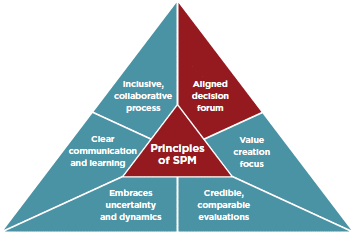During the last six months we have discussed five of the Six Principles of Strategic Portfolio Management that enable companies to derive the most value from their investments in R&D, NPD, NPD and other business opportunities. In this issue we address the sixth and last in the series, Clear Communications and Learning.
When organizations lack a value-based process to support strategic portfolio management decisions, they risk treating project/portfolio evaluation as an analytic exercise rather than as a collective conversation around value creation, supported by analytics. Because there is no inclusive process, they may not involve key stakeholders, resulting in lukewarm support for implementing decisions. Even worse, results may be used to blame, punish, or otherwise hold people accountable for performance when they have had little or no involvement in the decision-making process.
In their best-selling book “The Smart Organization: Creating Value through Strategic R&D,” SmartOrg co-founders David and Jim Matheson address the topic of “open information flow,” which directly relates to clear communication and learning.
In a “smart company,” they assert that “Virtually all information is available to whomever wants it. Information is used in surprising ways to create value. The flow of information crosses functional boundaries. In such an organization, people feel safe in sharing what they know and feel obliged to contribute to information-sharing systems. They are excited about teaching and learning.”
 2 min read
2 min read

